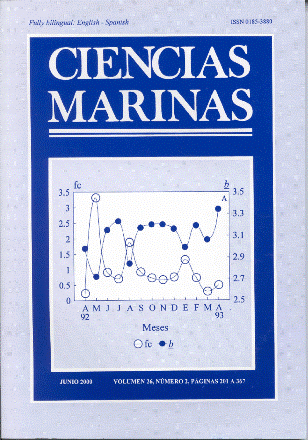Biochemical and bacteriological properties of the lysozyme of the clam Tivela stultorum
Main Article Content
Abstract
A lysozyme-like enzyme from the crystalline style of the clam Tivela stultorum was purified by chromatography of cationic exchange in carboxymethyl cellulose. The product had a specific activity of 25,407 units per milligram of protein, which represents a purification of 100 times. The specific activity observed with this enzyme was almost six times greater than the activity observed in the hen egg-white lysozyme under the same conditions. Using the isoelectric focusing technique, a component was observed that indicates an isoelectric point of 7.7 (IEF-PAGE, Phast Gel). A one-dimensional electrophoresis (SDS-PAGE) revealed an apparent molecular weight of 17,000 daltons. The enzyme was optimally active at pH 5.6–5.8, in 0.1 M phosphate-citrate buffer, with maximum activity at a temperature of 40ºC, and an ionic strength of 0.1043. At 4ºC, the lysozyme presented 26.7% of remnant activity, and was highly stable at elevated temperatures (90ºC) and extreme pHs, from 2.8 to 11.8, with activities above 75%. This enzyme proved to have antimicrobial properties with or without EDTA in the lysis of three bacteria (Streptococcus alfa, Micrococcus lisodeikticus and Escherichia coli), whereas hen egg lysozyme showed lysis in the presence of EDTA on S. alfa and E. coli. The results were also compared against the lysozyme of the scallop Chlamys islandica.
Downloads
Article Details
This is an open access article distributed under a Creative Commons Attribution 4.0 License, which allows you to share and adapt the work, as long as you give appropriate credit to the original author(s) and the source, provide a link to the Creative Commons license, and indicate if changes were made. Figures, tables and other elements in the article are included in the article’s CC BY 4.0 license, unless otherwise indicated. The journal title is protected by copyrights and not subject to this license. Full license deed can be viewed here.

